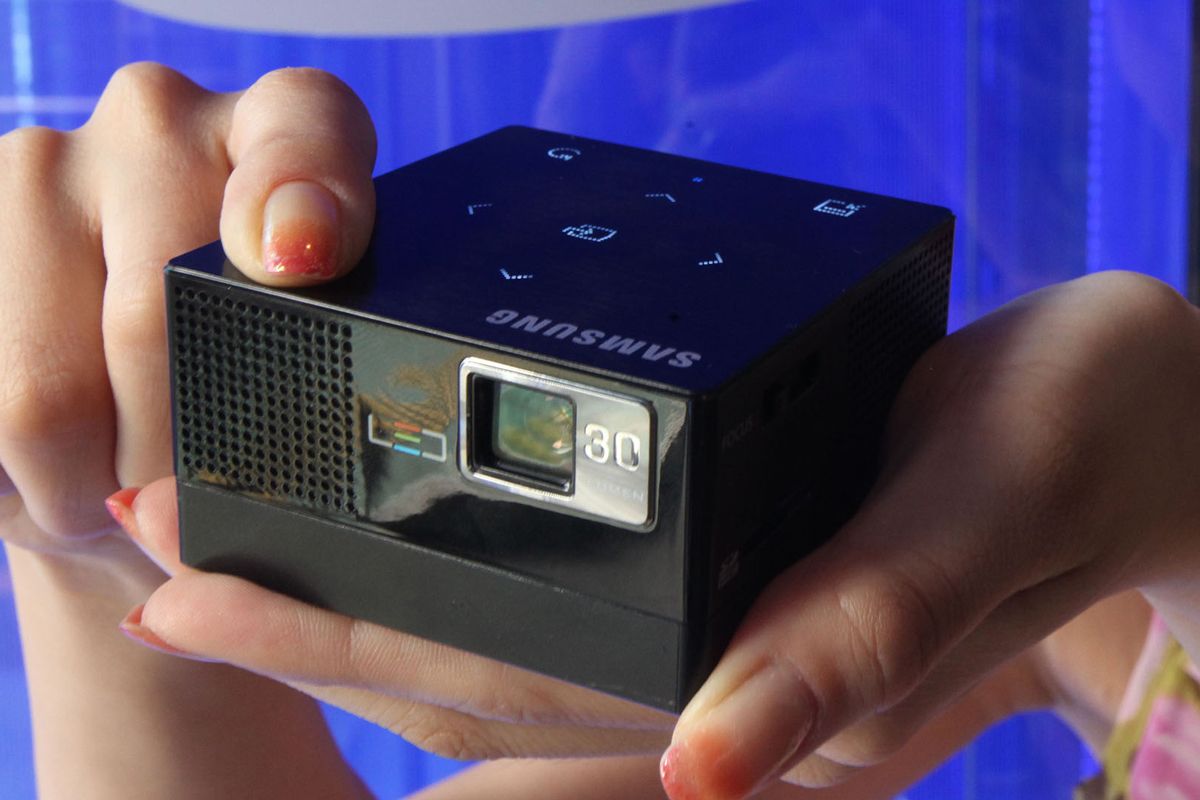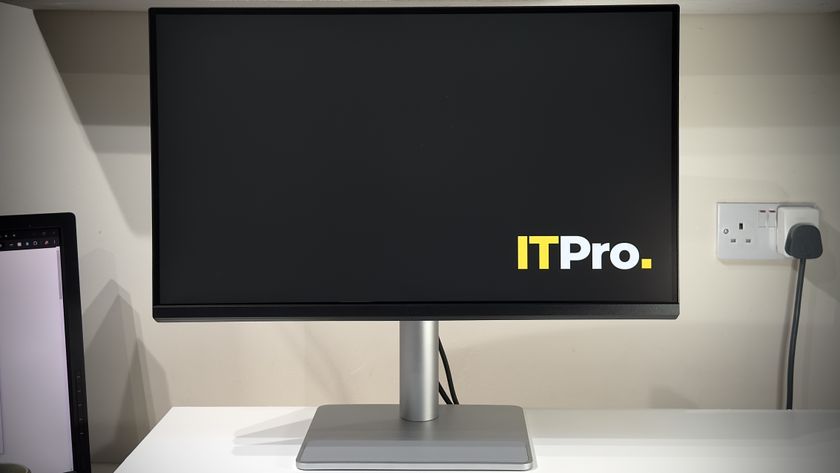Compounding the problem are the touch-sensitive controls on top of the projector. These are all but invisible until you touch one: they then light up, but your fingertip still has no way to feel for each individual control while your eyes are concentrating on the information on screen. Physical buttons would have been a far more sensible choice.
Image quality is a little better than we'd expected, although still far from that of a full-size projector. The widescreen resolution of 854x480 is not only low, but it's also not a standard resolution in Windows. When you connect a laptop using the VGA adaptor, you'll likely have to settle for 800x600, which makes text look fuzzy and can occasionally play havoc with aspect ratios. The odd resolution does more closely match that of high-end Android smartphones, but of those models with video output ports, almost all have micro HDMI ports so they won't be able to connect to the HDMI-less SP-H03 anyway.
Colours are fairly realistic, though, and contrast reasonable. As we've seen with other pocket projectors, it's impossible to get perfect focus across the entire screen when the top is in focus, the bottom is slightly out; the corners are fuzzy when the centre is pin-sharp.
The LED is rated at 30 ANSI lumens, which means it can project a slightly larger image than most rivals in similar ambient lighting conditions. However, you can only get away with small sizes under normal office lighting, only increasing to around 60in (5ft) in near darkness. Achieving a screen this size requires an 84in (7ft) throw distance.












